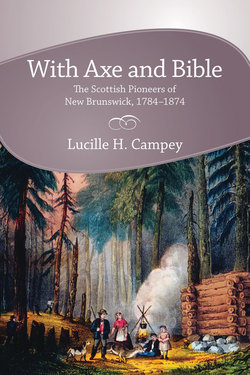Описание книги
New Brunswick’s enormous timber trade attracted the first wave of Scots in the late 18th century. As economic conditions in Scotland worsened, the flow of emigrants increased, creating distinctive Scottish communities along the province’s major timber bays and river frontages. While Scots relied on the timber trade for economic sustenance, their religion offered another form of support. It sustained them in a spiritual and cultural sense. These two themes, the axe and the bible, underpin their story. Using wide-ranging documentary sources, including passengers lists and newspaper shipping reports, the book traces the progress of Scottish colonization and its ramification for the province’s early development. The book is the first fully documented account of Scottish emigration to New Brunswick ever to be written. Most Scots came in small groups but there were also great contingents such as the Arran emigrants who settled in Restigouche and the Kincardine emigrants who settled in the Upper St. John Valley. Lowlanders were dispersed fairly widely while Highlanders became concentrated in particular areas like Miramichi Bay. What factors caused them to select their various locations? What problems did they face? Were they successful pioneers? Why was the Scottish Church so important to them? In tracing the process of emigration, author Lucille H. Campey offers new insights on where Scots settled, their overall impact and the cultural legacy which they left behind. With axe and bible Scots overcame great hardship and peril and through their efforts created many of the province’s most enduring pioneer settlements.
